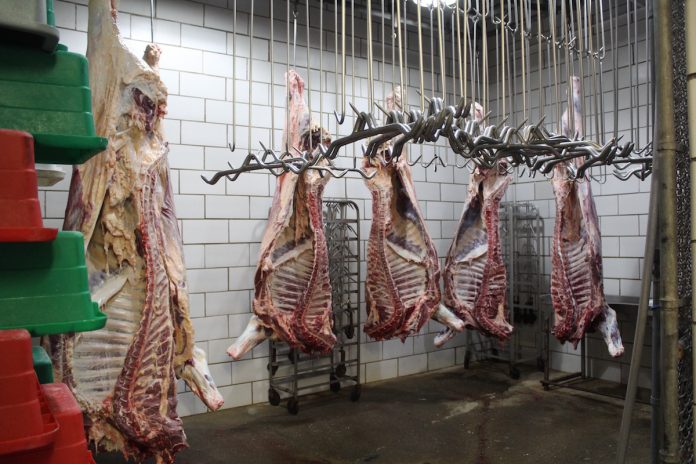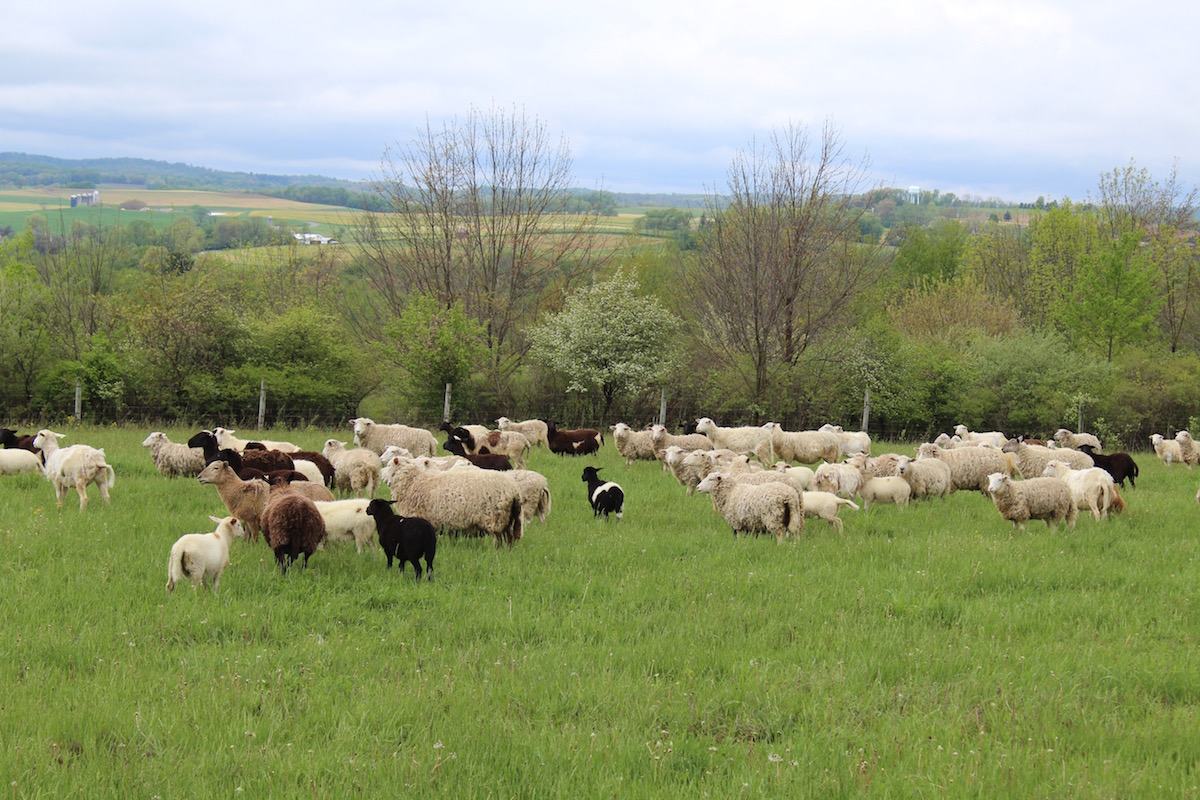
LATROBE, Pa. — For sale: one U.S. Department of Agriculture-inspected meat plant; located on 4.3 acres near Latrobe, Pennsylvania; set up to kill and process cattle, sheep, goats and pigs. Asking price: $1.25 million.
The rest of the real estate market is hotter than it’s ever been, but that doesn’t apply to slaughterhouses, apparently. John and Sukey Jamison’s meat plant has been on the market since the beginning of the year, and no takers, yet.
For all the talk about the need for more small processors and the lack of processing capacity for small farms, one would think that a turnkey USDA plant would be an easy sell. The fact that it’s still sitting on the market is a sign of the industry’s broader issues: the labyrinth of confusing federal regulations, the difficulty in running a customer-facing business and the struggle to keep skilled workers.
It’s a problem for people like the Jamisons who want to retire from the business with no family to take things over.
“My frustration is that, if I was 30, this would be a no brainer to me,” John said. “I’m getting out because I’m 74.”

The only way
The Jamisons knew nothing about processing when they bought the plant in 1994. They just knew it was the only way they were going to expand their business of selling lamb through the mail to high-end restaurants and retail customers across the country. Restaurants need consistency. Running their own plant gave them the control they needed over the process to ensure quality and consistency in their product. They also could process the supply needed to keep up with demand.
Before they bought the plant, “we used to drive all over western Pennsylvania to get it butchered,” Sukey said. “No one would cut the meat the way I wanted. I was pretty particular.”
It was a big investment and a big risk to buy and run their own USDA plant, but one that eventually paid off. At the peak of their business, they finished out 5,000 lambs a year. Then COVID-19 hit last spring, and their restaurant business dried up overnight.
“That was 60-80% of our business,” John said. “The last regular restaurant we sold to was on March 14 (2020).”
They sold to their retail customers through the end of the year and decided to call it quits. They put the plant up for sale. Some people have shown interest, but no one has put in an offer, yet.
Jamison Farm back story
Raising hundreds of lambs each year and running their own meat plant was a venture the Jamisons fell backwards into. The couple moved back to the Latrobe area, where John grew up, in the 1970s with the goal of buying an old farmhouse to renovate. The catch was that the house came on 64 acres.
They weren’t from farming families. John worked in sales. Sukey ran a catering business.
“We were children of the 60s,” John said. “We weren’t farmers. We were English majors from Washington and Jefferson [University]. We thought raising [sheep] on grass was good.”
Since they had the land, they got some sheep for their children to raise and show for 4-H. Sukey became a 4-H leader. As they raised lambs for themselves, Sukey also used it in her catering business and they began selling freezer lamb locally.
Everything was grassfed. John says they were some of the first in the region to do rotational grazing. They bought in feeder lambs and finished them, but they kept some ewes for lambing.
The couple started a mail order business, knowing that there wasn’t a strong local market for lamb at the time. Their farm got written up in some newspapers. They put out a small ad in New Yorker magazine. The rest was through word-of-mouth.
Restaurants and chefs around the East Coast began ordering from Jamison Farm. That gave them consistent weekly business. Retail customers were more seasonal in nature, buying heavily around Easter and in the fall and winter holiday seasons.
For about a decade, as they built their business, they used other processors. Then, an opportunity came up to buy a USDA-inspected plant in 1994, and they bought it. They finished 5,000 lambs a year at their peak, selling cuts by the mail and other products like soup, meat pies and sausage.
A rarity
Small USDA plants rarely come up for sale on the open market, said Rebecca Thistlethwaite, director of the Niche Meat Processors Assistance Network. Maybe one or two a year. Mostly they transition to the next generation within the family that owns it, or they sell within the owner’s existing network.
“There’s not a pool of investors looking to buy little plants,” she said.
Depending on the age of the plant, they can be hard to get financing for. They don’t appraise well, Thistlethwaite said, especially if they might need renovations. Last year, the average price to build a new meat plant was about $350 per square foot, although it is likely that price is higher now, given the increase in the cost of building materials this year.
Thistlethwaite said the smallest facilities she sees are about 5,000 square feet. The Jamisons’ plant is 6,810 square feet in total. To build a plant that size new would cost more than $2 million. It would cost even more to equip it. When the Jamisons bought the plant in 1994, they closed the deal on a Friday and were operating under USDA the following Monday.
Sometimes, depending on the age and condition of the plant, buyers might need to get an entirely new grant of inspection from the USDA. That would mean updating things that were previously grandfathered in. Navigating federal regulations and expectations is cumbersome and confusing, on top of being costly.

There are grants available to help processors upgrade or expand. The USDA announced in June $55.2 million in grants available through the new Meat and Poultry Inspection Readiness grant program.
On top of all of that, as much as farmers like to talk about wanting to run their own plant, few actually do. To do what the Jamisons did is rare.
“Switching from being a farmer to a slaughterhouse operator, that’s a full time job,” Thistlethwaite. “It’s hard to do both unless you have a big enough business that you can hire people.”
Waiting game
Still though, the Jamisons thought there might be more interest, given all the discussion they’ve heard over the years about processing issues for small farmers. And now that the opportunity is there, no one is biting. It’s puzzling and a bit frustrating to the couple.
They figured maybe a group of farmers could band together and pool resources to buy the plant and operate it for themselves, building a direct sales business like the Jamisons did. But they also know it’s a lot to take on.
“The farm was Sukey and I,” John said. “A 212-acre farm with 23 paddocks, all fenced, all watered. Running that many animals through it, it was just she and I and the border collies. Then, running the plant, being sure everything is right, putting up with the USDA, which is not easy. It’s a needed thing, but it’s not easy.”
They kept the plant running since they announced it was up for sale. Though it processed only lambs for the better part of 30 years, it was set up initially to process cattle. The Jamisons began processing cattle, hogs and lambs for other people in the meantime while they waited for it to sell. There are a handful of employees who could stay to staff it after a sale.
Once the plant sells, the Jamisons will officially retire. They still have about 150-200 ewes, but they won’t buy in any lambs to feed out this year.
“I talked to a friend recently who said he was retiring,” John said. “I asked him why. He said ‘well, I want to smell the flowers before I push them up.’ That’s where I am.”
(Reporter Rachel Wagoner can be contacted at 800-837-3419 or rachel@farmanddairy.com.)

Related content:
Meat processors face uphill battle to meet demand









